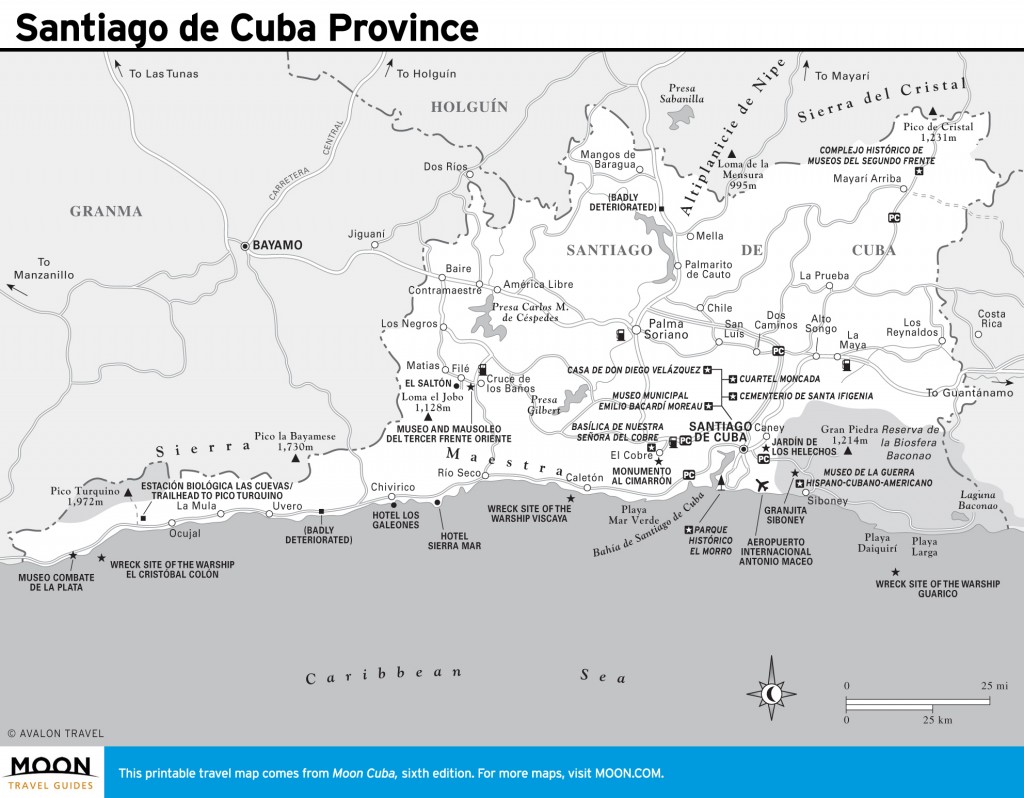
Parque Céspedes in Santiago de Cuba. Photo © Christopher P. Baker.
French and African words appear, a legacy of the many French and Haitian families that settled here in the late 18th century.The namesake capital city, second only to Havana in size, is distinctive in mood and teems with sites of historical and cultural interest, from a castle and the 16th-century house where Diego Velázquez governed Cuba to a notable cathedral and the Moncada barracks. Nearby there are beaches, the holy shrine of El Cobre, Reserva Baconao, and Parque Nacional Gran Piedra, reached by a serpentine road that leads through cool pine forest to a splendid garden perched atop a peak at over 1,200 meters.The Santiagüeros carry themselves with a certain lassitude and speak in a lilting tongue with a musical tone. French and African words appear, a legacy of the many French and Haitian families that settled here in the late 18th century. Santiago has the highest percentage of African blood in Cuba. Though the traditional architecture is mostly Spanish, the faces are mostly black. Such musical forms as son were birthed here, and the city remains Cuba’s most vital center of Afro-Cuban culture.

Santiago de Cuba Province
Most of the province is mountainous. The Sierra Maestra rises west of Santiago. East of the city, an elevated plateau extends for miles, slanting gradually to the sea, with the serrated Cordillera de la Gran Piedra behind. Behind these rise the Sierra de Baracoa and Sierra Cristal, extending into Holguín and Guantánamo Provinces.
The region was dealt a devastating blow on October 25, 2012, when Hurricane Sandy blasted ashore, causing immeasurable damage in and around the city of Santiago de Cuba, killing 11 people and destroying thousands of homes.
Excerpted from the Sixth Edition of Moon Cuba.